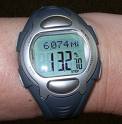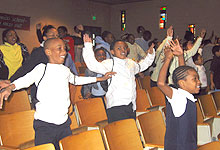This site provides the oppurtunity for students to make up a meal and see the actual nutrtional content. It provides a better insight of what they are consuming, according to the food pyramid.
Middle School Level:
An extesive site that provides many links for areas concerning middle school children. The nutrition link provides important information on general nutrition, dieting, weight and special dietary needs.
Elementary School Level:
http://www.nutritionexplorations.org
This website helps young children to learn what foods are healthy, learn food groups, and play games related to these topics. It answers simple questions, like "how much should I eat?", give recipes and provides links to other great nutrition sites for children.
High School Level:
http://www.theflexibilitycoach.com/OnlineFlexibilityTrainingProgram/Online_Flexibility_Program.htmThis websites provides stretching programs for specific sports and
specific muscle groups. Flexibilitity focused. Students can print out
Flexibility Program Sheets and view proper techniques.
Middle School Level:
http://www.Sportsfitnesshut.blogspot.com/2008/02/athletes-need-comprehensive-flexibility.html
This site describes the different types of stretches from static to
PNF. It describes the benefits of each type of stretching and includes
pictures.
Elementary School Level:
http://www.bam.gov/sub_physicalactivity/index.html
Site is designed for 9-13 year olds. It addresses health, nutrition,
fitness, and stress. The site offers games for kids, as well as, an
activity calendar and activity cards.
High School:
Gives a basic to in-depth into anything about yoga.
Middle School:
www.kidshealth.org/teen/food_fitness/exercise/yoga.html
Gives a short description of yoga with an interactive video.
Elementary School:
Gives very basic pictures and very basic instructions on yoga
Middle School:
http://www.calaisschool.org/index.php?option=com_content&view=article&id=49&Itemid=74Solid information about a strength training for children, very
remedial.
High School:
http://www.dragondoor.com/articler/mode3/177/
Gives info on creating a high school strength program and alot of articles to support weight training.
Middle School:
http://www.thefreelibrary.com/Strength+training+for+middle+school+athletes.-a0177274290
Coaches opinion about weight training in middle school and different
workout routines and proper procedures for weight training by middle
schoolers.
High school Level:
http://www.Sportsinjuryclinic.net/strenthening/resistancebands.php
- This website gives pictures and videos to give examples of each exercise. It also shows the muscles that are used in each exercise with a picture of that muscle.
Middle School Level:
http://exercise.about.com/cs/exerciseworkouts/l/blbandworkout.htm
This website gives a description for each work out and a picture of children doing the exercise. It also gives you links to other websites that show the same types of exercises.
Elementary School Level:
http://www.ncpad.org/exercise/fact_sheet.php?sheet=259§ion=1688
The website has colorful headlines and is easy to navigate. It also has various links to different exercises with pictures to illustrate.
High School Level:
www.internationalsport.com/NSD/
This website gives information about national sportsmanship day. It provides resources that includes video clips and examples around the world on how other organizations are showing the importance of sportsmanship.
Middle School Level:
An interactive type of website where kids can learn about eating healthy, and exercising. It touches upon how eating healthy can help you live a happy life.
Elementary School:
Gives a variety of games that promote heatlhy lifestyles, sports terms, and even exercises that they can do. It is done by a physical education teacher that enhances character building as part of their curriculum.
High School Level:
This website gives pilates exercises, history, benefits, terms, and classes.
Middle School Level:
http://www.expertvillage.com/video-series/102-pilates.htm
Provides videos on how to perform pilates exercises.
Elementary School Level:
This website has some links of basic yoga moves being done by
children. There are also a lot of pictures and benefits of the moves.

